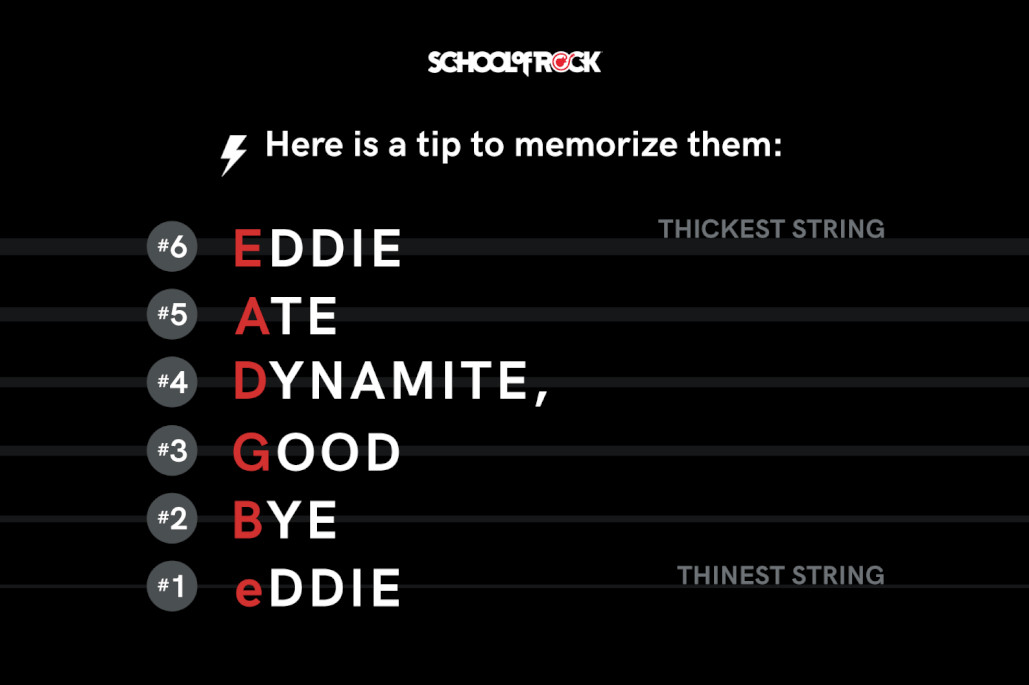Learning to play the electric guitar opens up a world of musical possibilities, and one of the very first steps on this exciting journey is understanding how to tune your instrument. An out-of-tune electric guitar can be frustrating and hinder your progress, making practice sessions less enjoyable and productive. This guide will walk you through the essentials of electric guitar tuning, helping you identify Electric Guitar Strings Notes, tune accurately with or without a tuner, and keep your guitar sounding its best for longer. Consistent practice is key to mastering any instrument, and ensuring your electric guitar is properly tuned is fundamental to a rewarding learning experience.
Understanding the Basics of Electric Guitar Tuning
The tuning of your electric guitar is controlled by the tuning pegs located on the headstock. These pegs are directly connected to each string. When you turn a tuning peg, you adjust the tension of the string, which in turn alters its pitch. Tightening the string increases the tension and raises the pitch, making the note sharper. Conversely, loosening the string reduces tension and lowers the pitch, making the note flatter.
How Often Should You Tune Your Electric Guitar?
For optimal sound and practice, you should tune your electric guitar every single time you plan to play it. Electric guitars, like all stringed instruments, are susceptible to changes in pitch. They don’t remain perfectly in tune between playing sessions due to factors like temperature changes, humidity, and the natural settling of the strings. Even during a practice session, the act of playing, especially techniques like string bending or extended playing periods, can cause your guitar to drift out of tune. Therefore, it’s a good habit to frequently check your electric guitar tuning while you are playing. If a chord sounds off, even when you are confident in your finger placement and knowledge of electric guitar strings notes, it’s a clear indicator that your guitar needs retuning.

Tuning Your Electric Guitar: Methods and Tools
Thanks to technology, tuning your electric guitar has become more accessible and user-friendly than ever before. Electronic tuners offer a quick and precise way to achieve accurate tuning. However, it’s also valuable to learn how to tune by ear using a reference note, a skill that enhances your musicality and understanding of pitch.
Utilizing Electronic Tuners for Electric Guitar Strings Notes
Clip-on electronic tuners are a game-changer for electric guitarists. These compact devices attach directly to your guitar’s headstock and detect string vibrations to determine pitch. Unlike older tuners that required cable connection, clip-on tuners work wirelessly, making them incredibly convenient for both acoustic and electric guitars. The tuner display clearly indicates whether a string is flat (too low), sharp (too high), or perfectly in tune. They are affordable, accurate, and incredibly easy to use, making them a must-have tool for any electric guitar player. Many modern beginner guitar amplifiers even come equipped with built-in tuners, adding to the convenience.
Tuning Your Electric Guitar by Ear (Without a Tuner)
Knowing how to tune your electric guitar without a tuner is a valuable skill, particularly when you’re on the go, traveling, or simply don’t have a tuner readily available.
Fortunately, smartphone apps have emerged as a readily accessible alternative. Numerous tuner apps are available for mobile devices, many of which are free. These apps utilize your device’s microphone to detect the pitch of your guitar strings, providing a visual or auditory guide to help you tune. As you adjust the tuning pegs, the app’s display updates in real-time, indicating when you’ve reached the correct pitch for each electric guitar string note.
Another method involves using a reference pitch from a reliable source, such as a piano, a tuning fork, or another guitar that you know is correctly tuned.
Tuning by ear requires a bit more practice and a developing ear for pitch. Start by playing the reference note and then attempt to match that note on the corresponding electric guitar string. Listen carefully to the relationship between the two pitches. Adjust your guitar string’s tuning peg until the pitch of your guitar string perfectly matches the reference pitch. Once you’ve accurately tuned one string, you can use it as a reference to tune the remaining electric guitar strings notes in relation to each other. This involves fretting a specific note on a lower string and tuning the next higher open string to match that fretted note.
Identifying Electric Guitar String Names & Notes: EADGBE
Standard tuning for a 6-string electric guitar uses specific notes for each string. From the thickest (lowest pitch) to the thinnest (highest pitch), the electric guitar strings notes are: E, A, D, G, B, and E.
 Memorizing the notes of electric guitar strings is crucial for effective tuning and playing.
Memorizing the notes of electric guitar strings is crucial for effective tuning and playing.
To aid in memorization of these electric guitar strings notes, many guitarists use mnemonics, or memory aids. Popular phrases include: Eddie Ate Dynamite, Good Bye Eddie or Elephants And Donkeys Grow Big Ears. Remember that the 1st string is the thinnest string (high E), and the 6th string is the thickest string (low E).
 A helpful mnemonic to remember electric guitar strings notes: Eddie Ate Dynamite, Good Bye Eddie.
A helpful mnemonic to remember electric guitar strings notes: Eddie Ate Dynamite, Good Bye Eddie.
It’s also worth noting that there are alternate guitar tunings beyond standard tuning that guitarists explore for different sounds and musical styles. However, mastering standard tuning and understanding electric guitar strings notes in standard tuning is the essential foundation for any electric guitar player.
Step-by-Step Guide to Tuning Each Electric Guitar String Note
Let’s break down the process of tuning each electric guitar string note in standard tuning. This method utilizes the relationship between the strings to tune your guitar without relying solely on an external reference pitch for every string after the first one.
Tuning Your Low E String (6th String)
If you have a reference pitch (from a tuner, piano, etc.), begin by tuning your low E string, which is the thickest string. If you’re tuning by ear without a reference, you can use the 7th fret of the A string (5th string) as an E note to tune your low E string to.
Fine-Tuning the 6th String (Low E)
Play the reference E note and then play your low E string. Adjust the tuning peg for the low E string, tightening or loosening it, until the pitch of your 6th string matches the reference E note. Listen carefully to eliminate any wavering or beating between the two notes; a perfectly tuned string will resonate smoothly with the reference pitch.
Tuning Your A String (5th String)
Next, to tune your A string, play the 5th fret of your accurately tuned low E string. This fretted note is an A note. Now, play your open A string (5th string) and compare its pitch to the 5th fret E string note. Adjust the tuning peg for the A string until it matches the pitch of the fretted note on the E string.
Tuning Your D String (4th String)
To tune your D string, fret the 5th fret of your tuned A string. This will produce a D note. Play your open D string (4th string) and adjust its tuning peg until it matches the pitch of the 5th fret A string note.
Tuning Your G String (3rd String)
To tune your G string, fret the 5th fret of your tuned D string. This fret produces a G note. Play your open G string (3rd string) and adjust its tuning peg until it matches the pitch of the 5th fret D string note.
Tuning Your B String (2nd String)
Here’s a slight variation: to tune your B string, fret the 4th fret of your tuned G string. This fretted note is a B. Play your open B string (2nd string) and adjust its tuning peg until it matches the pitch of the 4th fret G string note. Note the 4th fret is used here instead of the 5th fret as in previous steps.
Tuning Your High E String (1st String)
Finally, to tune your high E string (thinnest string), fret the 5th fret of your tuned B string. This fretted note is an E. Play your open high E string (1st string) and adjust its tuning peg until it matches the pitch of the 5th fret B string note.
Once you’ve gone through each electric guitar string note and tuning step, it’s a good practice to strum a chord and listen to the overall tuning. You might need to make minor adjustments to fine-tune your electric guitar. With practice, this method will become quicker and more intuitive.

Electric Guitar Summer Camps
For immersive learning experiences, consider School of Rock music camps offered during the summer. These camps provide hands-on instruction on essential guitar skills, including how to tune an electric guitar and play your favorite songs in a band setting. With workshops covering songwriting, stage presence, and more, these camps are designed for electric guitarists of all skill levels.
View Summer Camps
Maintaining Your Electric Guitar Tuning for Longer
After successfully tuning your electric guitar, you’ll want to keep it in tune for as long as possible. Here are some effective tips:
- Regularly Change Your Strings: Electric guitar strings lose their elasticity and vibrational quality over time. When your strings begin to sound dull, lifeless, or struggle to hold their tuning, it’s time to replace them with a fresh set of electric guitar strings. New strings significantly improve tuning stability and overall tone.
- Stretch New Strings: When you install new electric guitar strings, they need to be stretched. Gently stretch each string after tuning it up to pitch. You can do this by lightly pulling up on the string away from the fretboard (be careful not to pull too forcefully and break the string). Retune after stretching, and repeat this process a few times until the strings settle and hold their tuning better. Playing vigorously also helps stretch new strings.
- Proper Guitar Care and Storage: Protect your electric guitar from drastic changes in temperature and humidity. Extreme fluctuations can cause the wood of the guitar neck to expand or contract, affecting tuning stability and potentially causing damage. When you’re not playing, wipe down the strings with a soft cloth to remove oils and acids from your fingers, and store your guitar in its case or gig bag to shield it from environmental factors.
By mastering the process of tuning your electric guitar strings notes and implementing these maintenance tips, you’ll ensure your instrument is always ready to play, sounds its best, and makes your practice sessions more enjoyable and musically rewarding.
Thinking about getting a new electric guitar? Explore our Guitar Buying Guide
